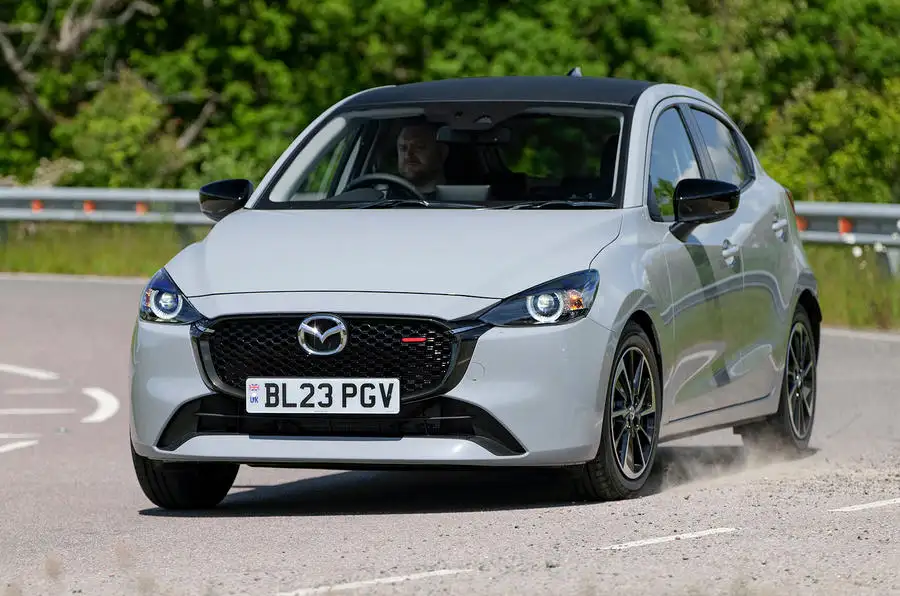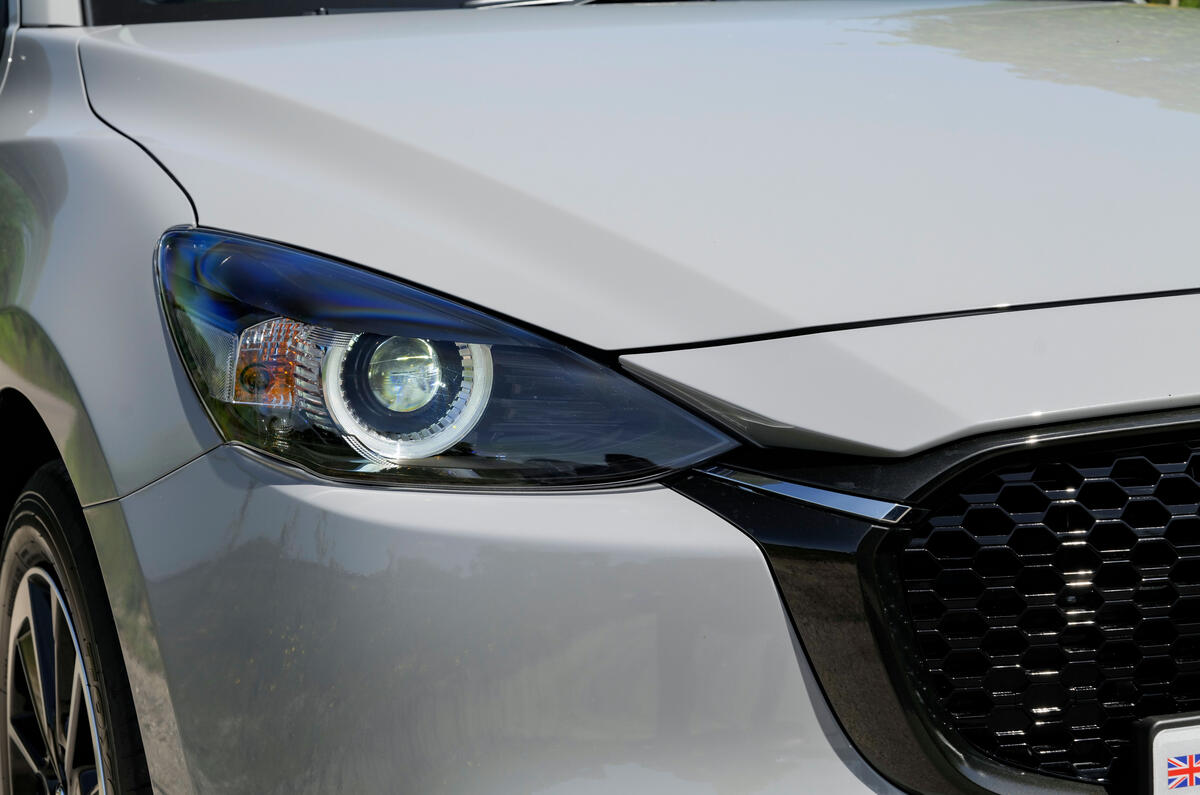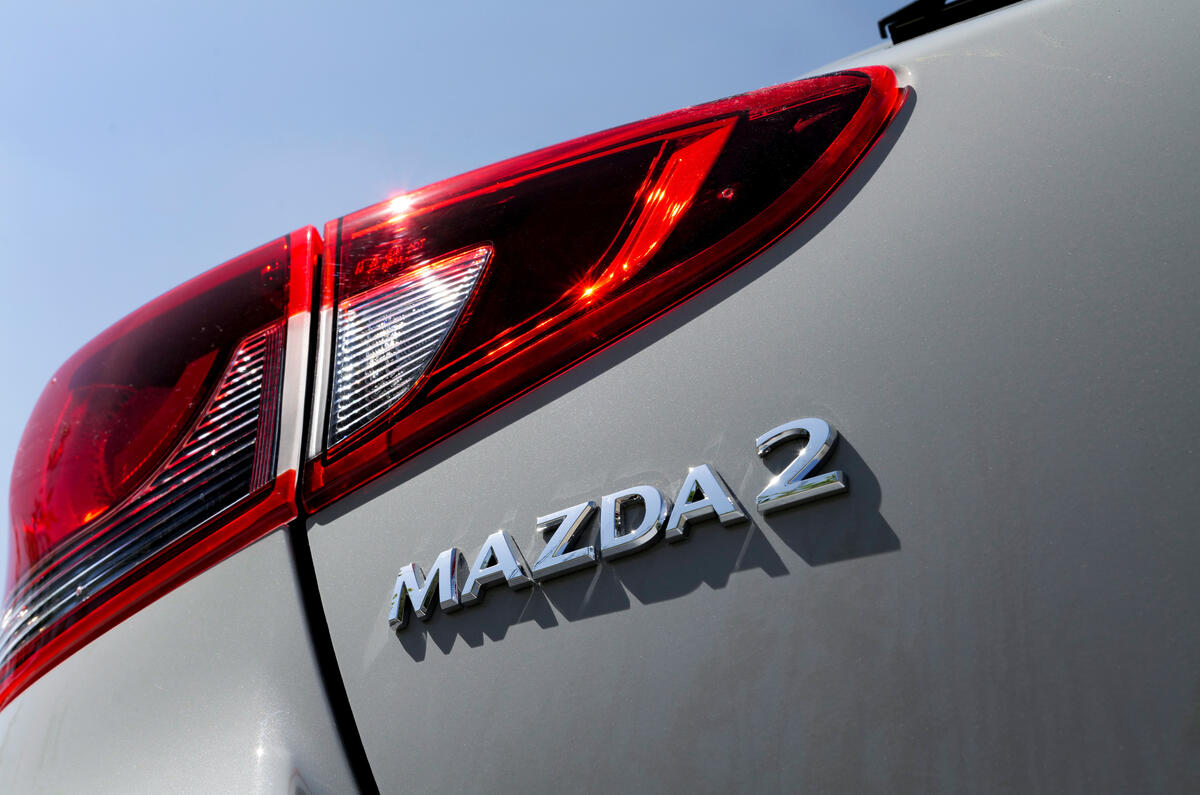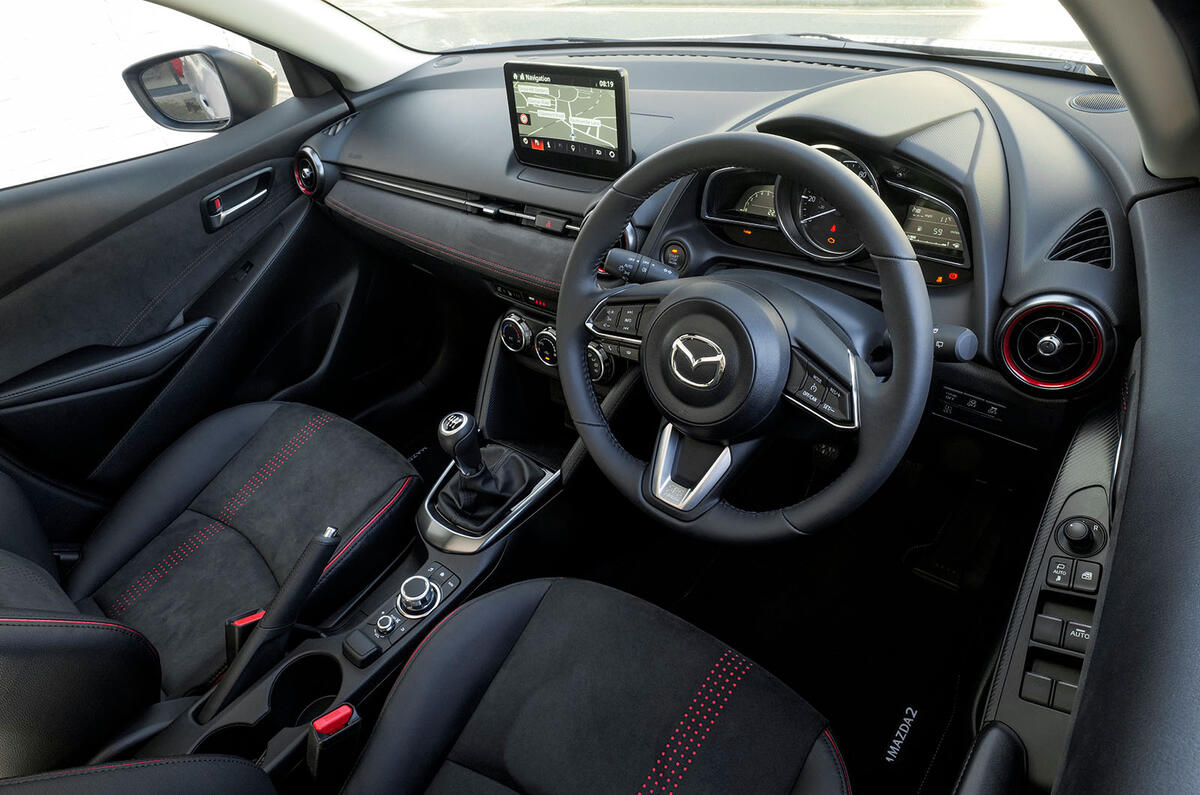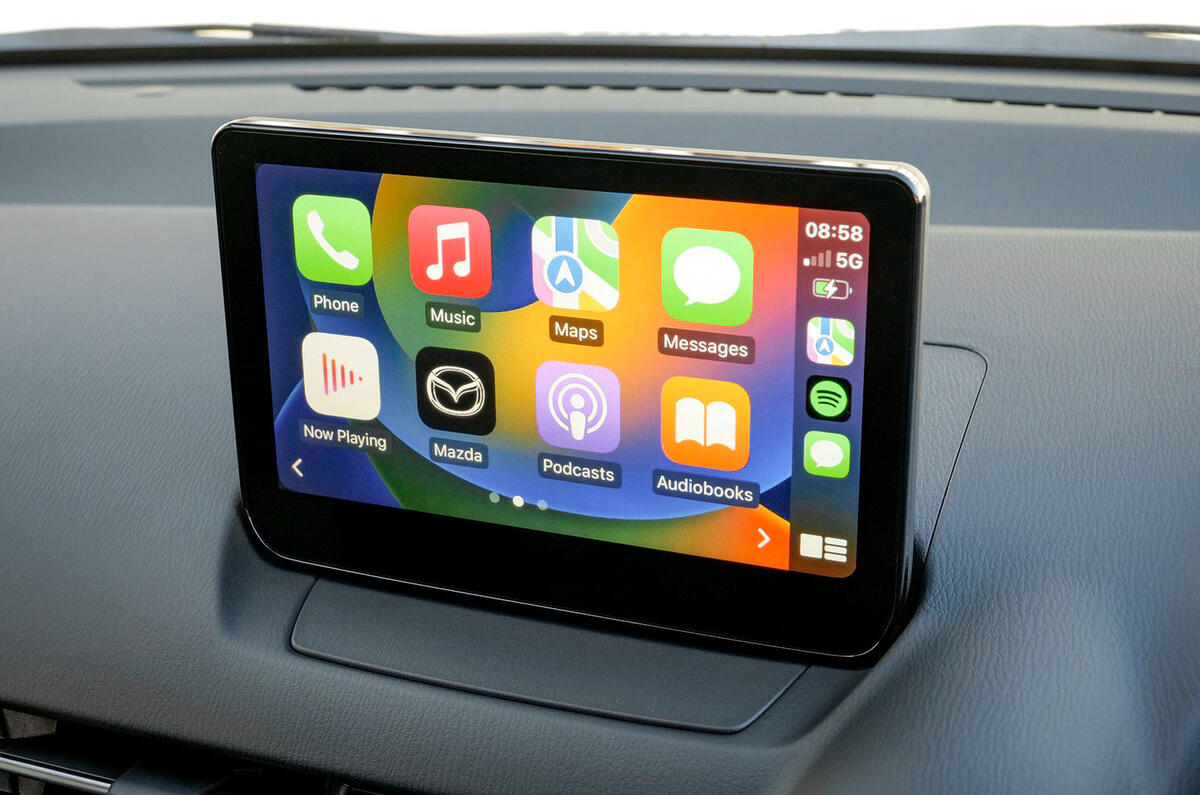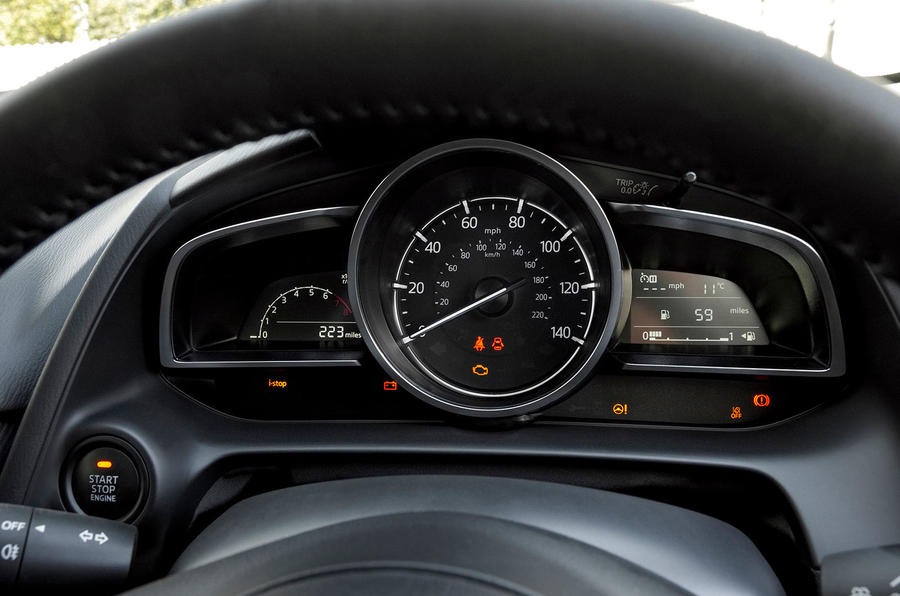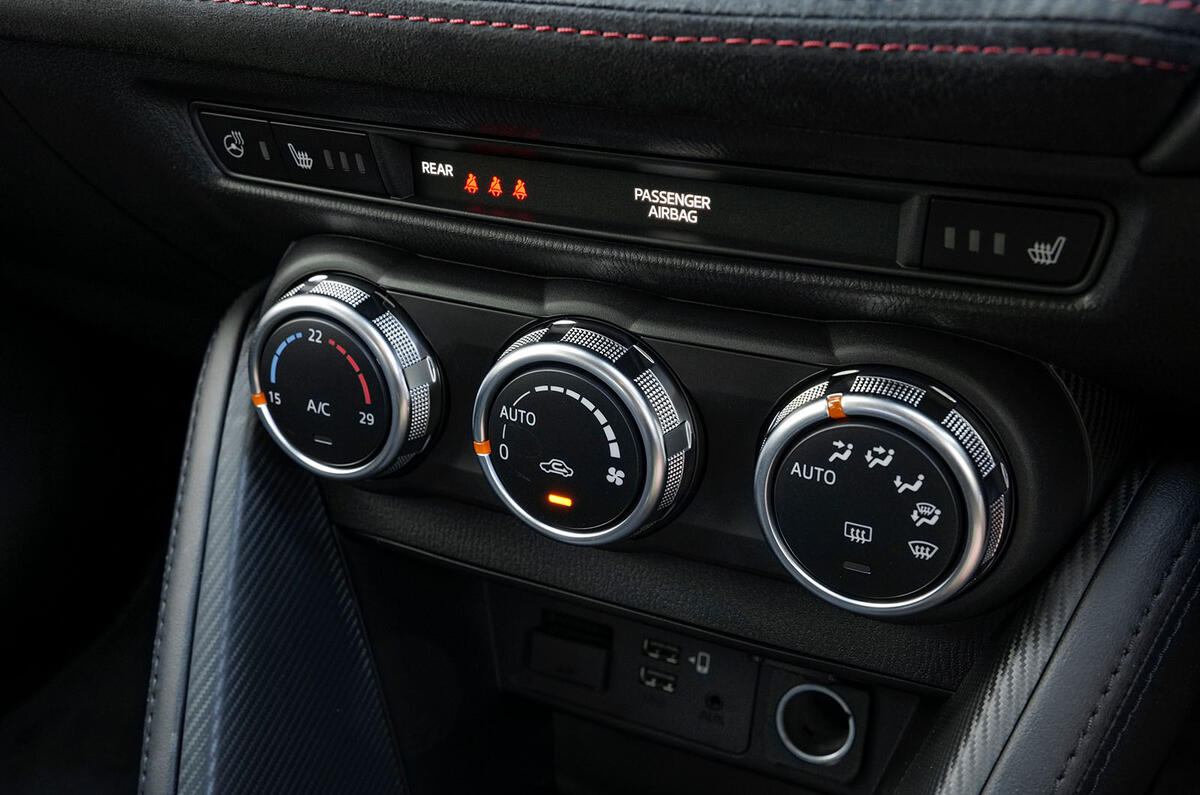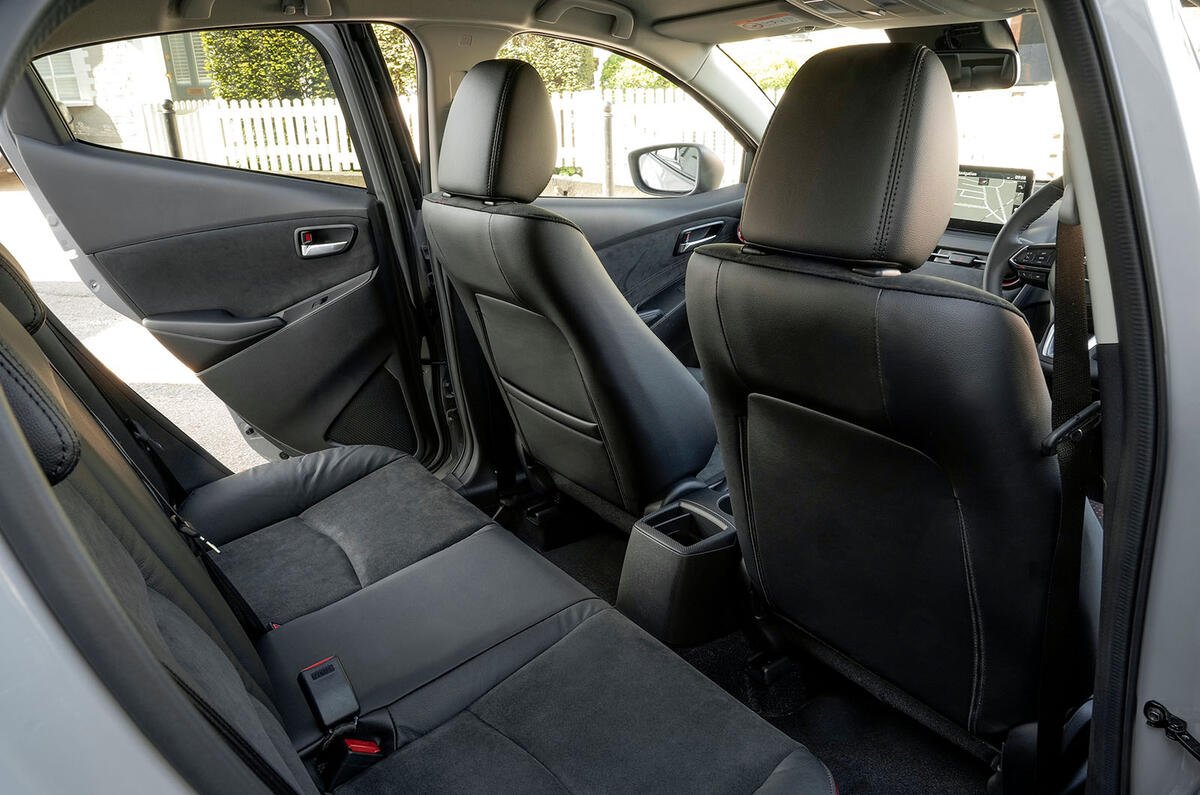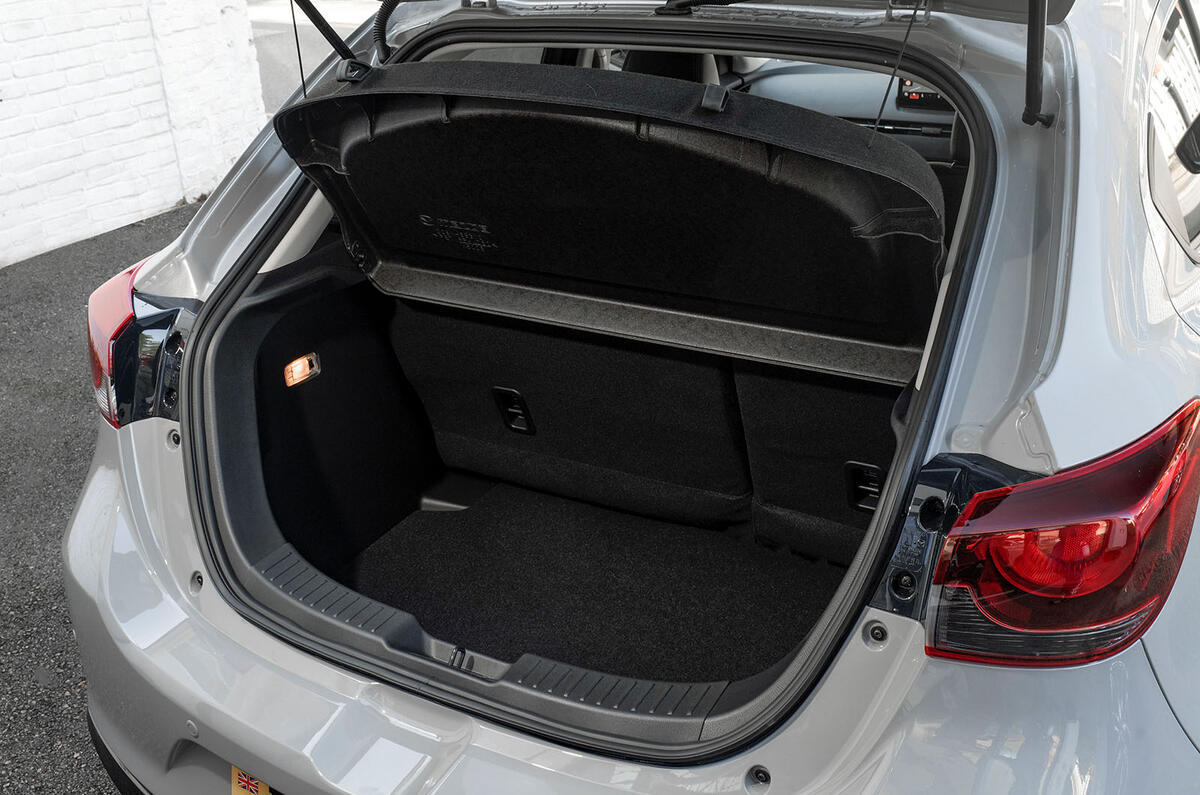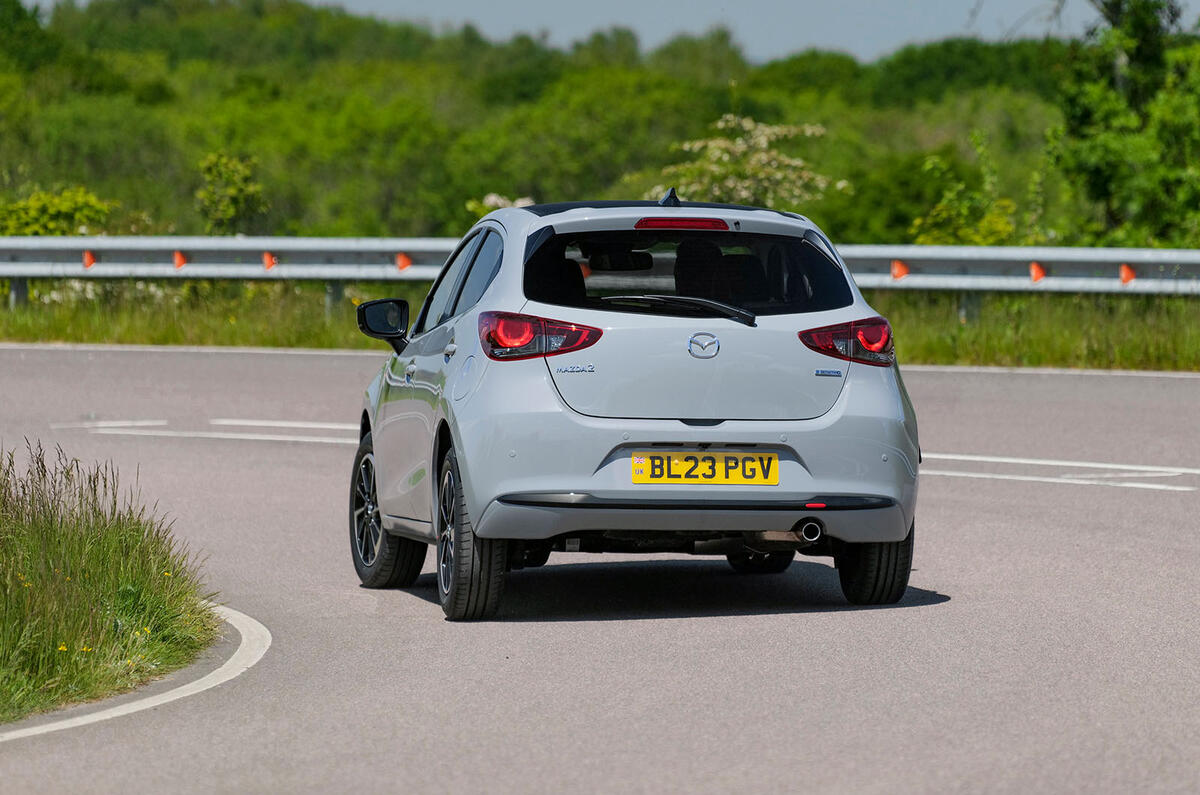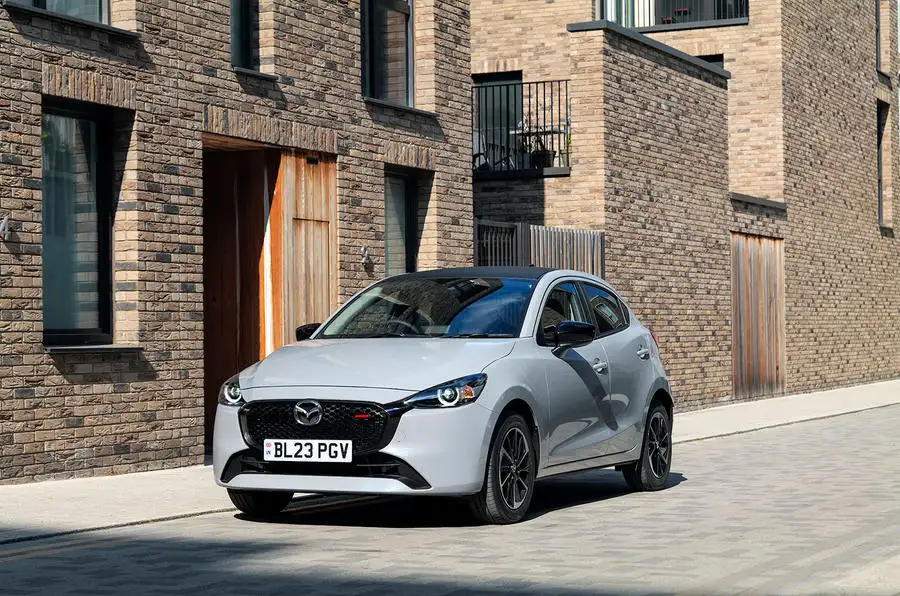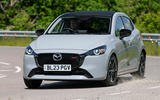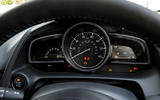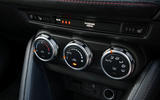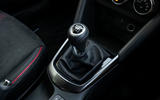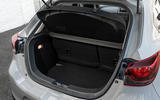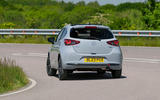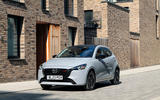At the crux of the third-generation 2’s look, as compared with its predecessor, is the distance between the front axle and the base of the A-pillars.
Whereas the previous model favoured something more akin to a monocab profile that apparently brought those two elements closer together, here Mazda moved the front axle 80mm forwards and the pillars 80mm back.
It uses Mazda’s Skyactiv platform, which increases the high-strength steel proportion by 12% and ultra-high-tensile steel now makes up 30% of the total structure. As a result, it's not only 22% stiffer than the old 2 but also 7% lighter, despite being larger.
The suspension is MacPherson struts at the front and a rear torsion beam, very much the supermini norm, but Mazda increased castor angle at the front wheels to improve steering response and raised the mounting of the twist beam at the rear to better handle impacts. The steering ratio was also slightly quickened and its mounts adjusted.
Great attention was paid to refinement. Among the solutions are improved floor panel beads for 5dBA less radiant cabin noise, a separation of suspension resonance from that of the body cavity, the wind noise-suppressing design of the door mirrors and wipers, and the optimisation of powertrain mounts.


